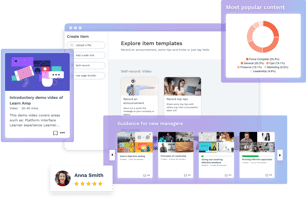This Summer I had the opportunity to attend a series of breakfast round tables for L&D and HR leaders, hosted by Learn Amp and Culture Consultancy.
A recurring theme during these events was the shifting landscape.
The traditional notions of well-defined career paths and promotions were quietly making way for a new focus – one that centres on fostering skill development and creating growth opportunities for employees.
This transformation holds particular significance in the quest to keep younger employees engaged, as they consistently ask, "What's next?" The secret sauce, it seems, lies in the world of skills.
A recurring solution discussed throughout these events was the adoption of a progression framework, allowing employees to take a sidestep into complementary roles, offering a real sense of skills progression even when a vertical promotion isn't on the horizon.
Adapting to Changing Times
The one-size-fits-all approach no longer resonates with the desires and expectations of today's workforce, particularly the younger generation, who tend to ask, "What's next?" The answer is no longer just about promotions on a predetermined career trajectory – it's about providing avenues for skill development and horizontal growth.
Skills have emerged as a new currency in the contemporary workplace.
Instead of being fixated on climbing the corporate ladder, employees place a premium on acquiring and honing their skills, exposing them to more career options than ever before.
Skill development empowers employees to navigate the ever-changing landscapes of their job roles and adapt to the evolving demands of their industries.
It amplifies their capacity to make substantial contributions to the company's mission and objectives.
Plus, for businesses, fostering a culture of skill development is a tool for retaining talent. Employees tend to stick around when they recognise that their employer values and nurtures their professional growth.
Enter Horizontal Skills Development
An exciting concept gaining momentum in HR circles is horizontal skills development.
This revolves around enabling employees to diversify their skill sets and shift laterally into complementary roles within the organisation. Essentially, it offers employees pathways for growth that don't necessitate climbing the corporate ladder.
Here are some key elements that make horizontal skills development a compelling strategy for nurturing employee growth:
- A Taste of Diverse Skills: Instead of being confined to a single career track, horizontal development encourages employees to dabble in a variety of skills across different roles or departments. This not only keeps their work fresh and exciting but also turns them into adaptable assets for the organisation.
- Progression on a Different Plane: Even in the absence of immediate promotions, horizontal skills development provides a tangible sense of progression.
- Tailored Career Routes: Each employee is unique, with distinct career aspirations. Horizontal development respects these individual differences, allowing employees to craft their career paths in line with their interests and strengths. This personalised approach significantly boosts job satisfaction.
- Boosted Engagement and Retention: When employees can visualise a future that includes horizontal growth and a continuous learning curve, they're more likely to stick with their current employer. This commitment translates into improved retention rates.
- Adaptability: In a rapidly shifting business environment, the ability to pivot and adapt is non-negotiable. Horizontal skills development ensures that employees have a versatile skill set, well-equipped to handle the ever-changing demands of the market.
Bringing Horizontal Skills Development to Life
To put horizontal skills development into practice, a strategic approach is crucial:
- Skill Set Assessment: Start by evaluating the existing skills within your workforce. Identify areas where employees possess untapped potential for growth and where cross-functional collaboration can flourish.
- Invest in Training and Resources: Provide ample training opportunities and resources to facilitate skill development. This can include workshops, online courses, mentorship programmes, and more.
- Promote Cross-Functional Collaboration: Encourage the formation of cross-functional teams that enable employees from different departments to collaborate on projects. This fosters the exchange of knowledge and skills.
- Tailor Career Development Plans: Collaborate with employees to create customised career development plans that align with their interests and the organisation's objectives.
- Recognition and Rewards: Set up a system for acknowledging and rewarding employees who actively engage in horizontal skills development. This could involve promotions, salary bumps, or simply celebrating their achievements.
As the HR landscape undergoes a significant transformation, with a renewed focus on skill development and horizontal growth opportunities, companies are better equipped to engage and retain their workforce, particularly the younger generation.
The conventional career ladder may not be entirely forgotten, but it's evolving into a more flexible, skills-centric approach.
Conversations with peers and engaged customers have underscored the importance of embracing horizontal skills development, empowering employees to continually learn, adapt, and thrive in an ever-evolving business environment.
Discover how Learn Amp can help you lead the way in skills development with our suite of skills management and development tools. It's a step towards a future where your employees thrive, and your organisation flourishes.

|



